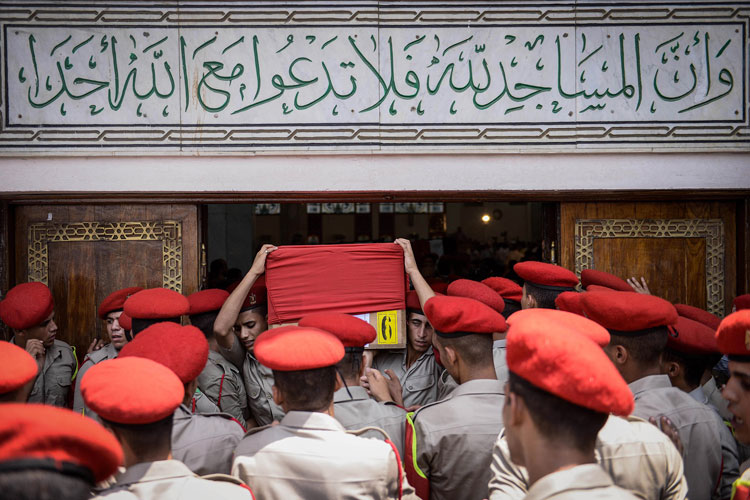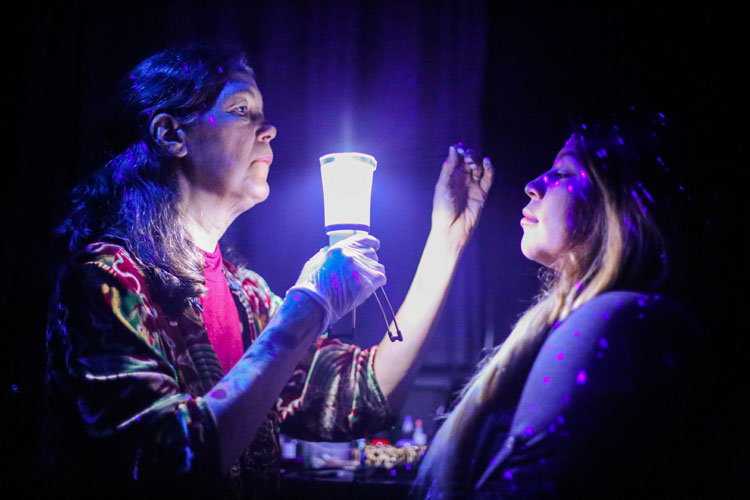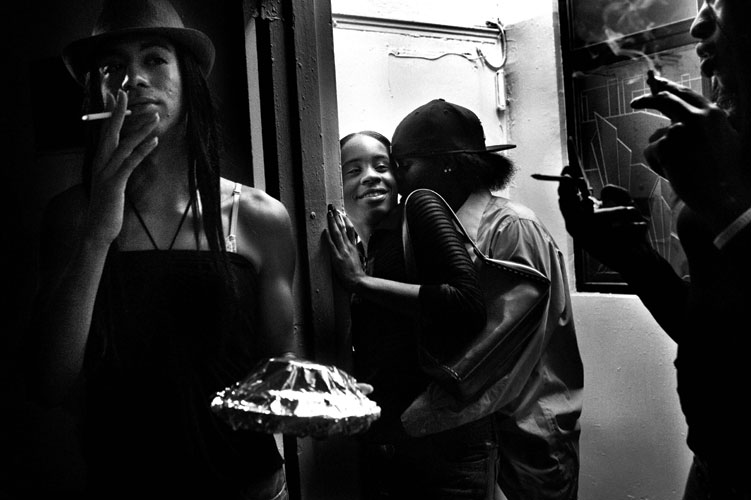
September 11, 2017
HOW A BOOK ABOUT
BLACK WOMEN
PHOTOGRAPHERS
WAS CREATED, FUNDED
AND PUBLISHED



Laylah Amatullah Barrayn discusses the challenges of publishing Mfon: Women Photographers of the African Diaspora, and her aspirations for the book.
PDN: What motivated you to publish the work of black women photographers, and what’s your goal?
Laylah Amatullah Barrayn: I was inspired by Jeanne Moutoussamy-Ashe’s 1986 book Viewfinders: Black Women Photographers. She highlighted the work of black women photographers from the late 1800s to the 1980s. The book is incredible. I was waiting for somebody to publish an updated book.
PDN: Why did Moutoussamy-Ashe’s book resonate so much?
L.A.B.: It resonated because it went so far back. I knew only about [photographers] contemporary to me. At the time, I didn’t know photography was being used very leisurely [by blacks] in that era—the late 1800s. I knew it was being used as a colonial tool here and abroad, but to have women leisurely document their world, and have their sitters have agency in their photos—to go into a studio or call a photographer to their home to be photographed as they wanted to be photographed—that’s powerful to me.
PDN: When did you start working on your book?
L.A.B.: I started in 2006, with Delphine Fawundu. We were looking through Committed to the Image: Contemporary Black Photographers [edited by Barbara Millstein, Clyde Taylor and Deba Prasad Patnaik] and we thought, Wouldn’t it be nice to have a huge book like this just full of works by women of African descent? And we were like, Let’s do it! We looked online to see how to publish a book, and how to find an agent, and asked our friends to send us pictures. We laid it out, and went over to Dr. Deb’s [Deborah Willis’s] house and showed her this prototype, and [asked]: Would you mind writing an introduction? Then we couldn’t find anyone to publish it.
PDN: What were the reasons publishers were giving you for turning it down?
L.A.B.: They said there was no [audience] for it. So we shelved it.
PDN: How did you end up reviving it?
L.A.B.: Last year, Delphine said we should dust off that proposal. We had both spent a lot of time on the African continent, engaging with what was happening with photography there. We had seen these festivals popping up, so we realized we should look at the proposal [again].
PDN: In what ways did you change it?
L.A.B.: We had strong images in the book, but they were arranged by themes. This time we’re doing it like an anthology. We’re showcasing these women and what they do.

“Little Ethiopia in USA,” by Hilina Abebe. © Hilina Abebe
PDN: You’re running one or two images from each photographer?
L.A.B.: Some people have a [few] more, because they have series [of images], or some images run a little smaller. We have a great designer who’s working it out for us.
PDN: Who’s the designer?
L.A.B.: Her name is Shannon Washington. She does a lot of websites and books and things like that. She’s on board because she was good friends with Mfon, the person our book is named after. Mfon [Mmekutmfon “Mfon” Essien (1967-2001)] died right before her work was exhibited at the Brooklyn Museum. I was 19 years old, and that really affected me. She was an [inspiration] for many of the photographers here in Brooklyn so I decided to name the book after her.
PDN: How many photographers are you featuring in the book, and how did you select them?
L.A.B.: I made a list of all the contemporary women photographers of African descent I know [or have heard of]. I came up with about 550 people. I was interested in highlighting people who hadn’t gotten much recognition. In Addis Ababa, Cape Town and Dakar, I was meeting women who were doing amazing things just locally, as they are in DC or Atlanta or here [in Brooklyn]. I was interested in different types of work: documentary work, conceptual work, fine art, advertising.
PDN: How did you get them to contribute?
L.A.B.: I emailed them, and called some of them. It was simple: I’m doing this book with Delphine, I’d like to feature you, and people were like, Yeah!
PDN: Did you have funding? Are you paying contributors?
L.A.B.: We received a Brooklyn Arts Council grant to do a small run of a small book, featuring just a few photographers. Now we have 100 photographers in this book and I wish we could compensate them. As much as I don’t like to ask people to donate, I asked them to donate their work. I’m extremely thankful and I told them I didn’t take their donations lightly. And you know this book is launching a journal next year. We’re going to be able to pay [contributors] for that.
PDN: How much was the grant from the Brooklyn Arts Council?
L.A.B.: It was $4,000, and I [thought]: Maybe we should build on this grant.
PDN: How did you raise additional money?
L.A.B.: We’re doing a GoFundMe to get a couple more dollars to print a proper book.

From Nydia Blas’s series, “The Girls Who Spun Gold.” © Nydia Blas
PDN: How much do you need to raise, and how much have you raised?
L.A.B.: We need to raise $13,000, and we’ve raised $8,000 in three weeks.
PDN: Who is the intended audience for the book?
L.A.B.: People who love art and photography. That’s pretty much it.
PDN: Are you trying to get exhibitions?
L.A.B.: I have this whole dream. I want to start foundations. I want to be a philanthropist, give grants, do workshops, do conferences. I would love if this book were exhibited somewhere, and then traveled. I’ve been thinking about ways to make that happen.
PDN: Is it part of your goal to make editors and curators more aware of these photographers and encourage editors to hire them?
L.A.B.: I do hope that the women get work from the book. But my book is not so much a reaction to not being let in. I just want to show the work of these women, and I want to show a global diaspora community. But when the book gets published, I’m going to send it to everyone.
I hope that some of the editors take notice, because the work is beautiful.
PDN: What are the struggles faced by women of African descent in establishing careers as photographers?
L.A.B.: The simple answer is that gatekeepers go with who they’re comfortable with, who’s been vetted, right? I can just speak for me. Everybody’s going to have different struggles. I know that when I’m doing documentary work, I might not be creating the narrative that an editor might want to work with. Maybe it’s perspective, maybe I’m unknown, or maybe no one has vetted me. But it’s a white male-dominated space, everywhere you go.
PDN: How do we make it more balanced and bring in more perspectives?
L.A.B.: If I’m an editor, and I’m only working with people that I know, it’s because you know they are going to produce. But at the same time, you miss out on so much talent and diverse perspectives in storytelling. Bringing about balance means making an effort to look for people, [and asking yourself]: Am I really making an effort?
